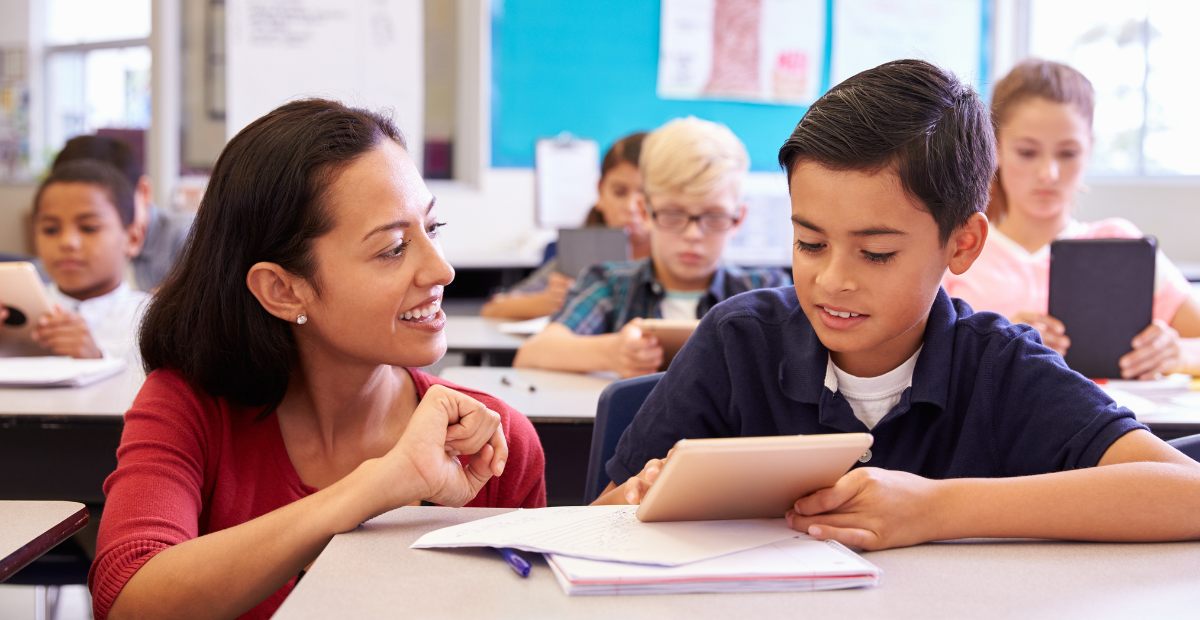How Can Teachers Support Interventions in the Classroom?
POSTED ON: August 1, 2022

One of the biggest challenges I see with interventions at school is successful generalization into the general education classroom. I can’t tell you how many times a student has perfected their sound production for /s/ or /r/ and as soon as they leave my therapy room to return to their gen ed classroom, they immediately revert to lisping and making incorrect sound productions. This happens with students who are working on speech-language skills, and with students who are working on strengthening their reading skills.
There are many members on the special education and IEP teams, and it’s crucial they are on the same page about what is and is not working for a student. Unfortunately, special education providers (SLPS, OTs, PTs, etc.) are not able to be with every student all day at school. Below are some ideas and ways teachers can support the interventions that are being done by special education professionals in the general education classroom.
- Promote an open line of communication with the special education providers. This can be done via email, a quick check in during a passing period, during prep time, or whenever best suits your schedule. Developing a relationship and keeping open communication with special education providers allows you to have more discussions about your shared students and generate ideas for those students.
- Familiarize yourself with the student’s IEP goals. This will help you understand what your student’s specific needs are and what they are working toward this year. Understanding the specific needs of the student will help you prepare more appropriate learning materials and assignments for that student. For example, if a student has an IEP goal targeting reading CVC words, you would not give them assignments that ask them to read multisyllabic words or paragraphs as that would be too far above their current ability level.
- Ask about what cues work best for that student. Every student responds differently to interventions. Therefore, the cues that work for one student may not work for another student. Using the same cues in the gen ed classroom that are used by the special education provider can promote generalization of skills and remind the student to use the strategies and skills they learned outside of the gen ed class. This also allows the student to practice their skills more. For example, I have collaborated with some of the teachers at my school to prompt our students to use their newly developed speech skills during private reading time with the gen ed teacher in class.
- Find an organizational system that works best for you. Gen ed teachers have students of all ability levels in their classroom and several students on IEPs. Keeping track of who works on what is challenging given the immense responsibilities teachers have every single day. Some teachers I work with collaborate with special education providers via Google Drive and others keep paper copies of goals and behavior charts along with intervention tips for the classroom in folders they can easily access on their desk. Find a system that works best for you to keep track of IEP goals and intervention strategies that help you better support interventions in the classroom.
- Ask questions. Asking questions is always the biggest piece of advice I give to IEP team members, school staff, and parents. If you don’t understand why or how a cue works for a student, why the student is targeting that goal, how an intervention program works, or what you could be doing differently in the classroom, miscommunications are likely to occur at the expense of the student’s success. Asking questions promotes discussion between team members and allows everyone’s thoughts to be heard.
It can be frustrating when a student is able to execute a skill or be more successful in one setting and not in another. It’s important to remember that every environment a student is in at school has different sensory factors, distractions, and number of peers that can impact how a student learns.
Practicing patience and seeking understanding of the interventions being used can make a monumental difference in a student feeling successful.
Red Square Pegs was established to empower dyslexics by embracing dyslexia through awareness and shared experiences and to be a symbol of acceptance, pride, and confidence.

